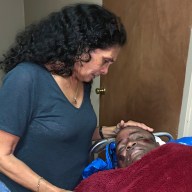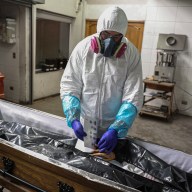You probably know from cop shows that time of death is important for catching a killer. The medical examiner can usually figure it out from things like body temperature and rigor mortis.
“That’s only good for the first 24 hours. After that, it’s the insects,” says Gail Anderson, professor of criminology and co-director of the Centre for Forensic Research at Simon Fraser University.
As a forensic entomologist (entomology is the study of insects) Anderson, 47, can tell the cops how long a person has been dead based on the bugs found on the decaying body. It’s a practice that dates back to 12th century China.
When the police call her in, Anderson or one of her five grad students have a look at the crime scene and take a note of whether the body was in the shade or exposed, ask if the person had been using drugs and take samples of the insects on the scene.
Then it’s off to the lab to grow the insects to full maturity, which takes a few weeks. Only then can Anderson and her team determine the bugs’ precise species and age. This is important: Different insects show up on a body at different times. The earliest critters on the scene are usually blowflies (the green, buzzy creatures that look like house flies and are very fond of dog poo). Beetles, for instance, show up much later.
The progression of bugs and how long they stay varies from region to region. Anderson refers to published studies, including her own, to decide on time of death. Depending on how much time has passed, she can usually get it down to a range of days.
Through the centre, Anderson assists on about 20 cases a year, helping police from across Canada.
Anderson’s interest in bugs was piqued back when she was growing up in England. She was just 14 when she learned about insects in school, and thought they were pretty interesting.
She studied zoology at the University of Manchester, and moved to Canada to take the world-famous masters of pest management program at SFU. While doing her PhD, her supervisor told her there was a demand for mixing her knowledge of bugs with police work. She immediately took to working at crime scenes. “I could see what I was doing was useful. I liked seeing my research applied.”
















